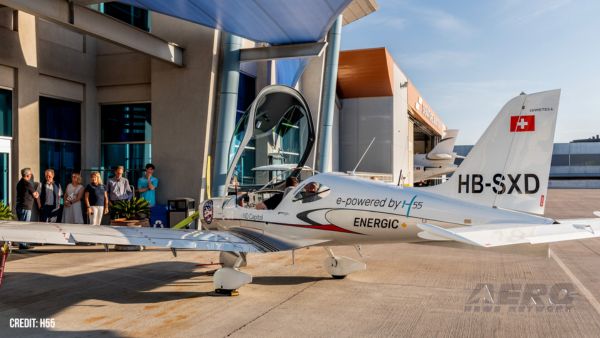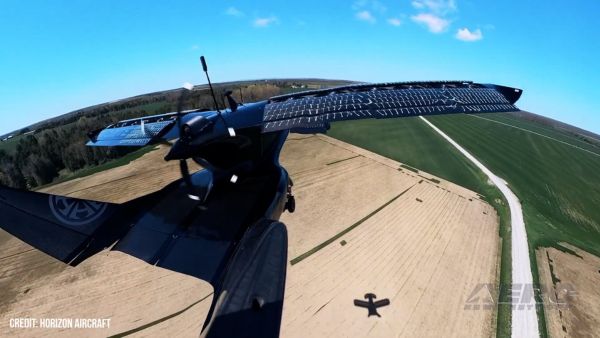Wreckage Debris Field Extended About 0.9 Miles Southwest Of The Main Wreckage
Location: Stagecoach, NV Accident Number: WPR23MA113
Date & Time: February 24, 2023, 21:14 Local Registration: N273SM
Aircraft: Pilatus PC-12/45 Injuries: 5 Fatal
Flight Conducted Under: Part 135: Air taxi & commuter - Non-scheduled - Air Medical (Discretionary)

On February 24, 2023, at 2114 Pacific standard time, a Pilatus PC-12/45, N273SM, was substantially damaged when it was involved in an accident near Stagecoach, Nevada. The pilot, and four passengers were fatally injured. The airplane was operated as a Title 14 Code of Federal Regulations Part 135 air ambulance flight.
The flight, operated by Guardian Flight LLC, departed Reno-Tahoe International Airport (RNO), Reno, Nevada, to transport a patient to Salt Lake City International Airport (SLC), Salt Lake City, Utah. Night instrument meteorological conditions prevailed at the time of the accident, and an instrument flight rules (IFR) flight plan had been filed and activated.
A preliminary review of archived voice communication information from the Federal Aviation Administration (FAA) revealed that the pilot contacted Oakland Air Route Traffic Control Center (ARTCC) at 2108:37, and reported that he was climbing through 15,400 ft. The controller instructed the pilot to climb and maintain flight level (FL) 250 and issued a caution for light to moderate turbulence, which was acknowledged by the pilot. No further radio transmissions were received from the accident pilot.
Review of the archived Automatic Dependent Surveillance-Broadcast (ADS-B) data showed that the airplane departed runway 17L at RNO on a track consistent with the ZEFFR 7 RNAV departure procedure. The airplane continued a southerly heading until 2105:45 while in the vicinity of the EPOSE waypoint, when a left turn to a southeasterly heading was observed at an altitude of about 12,100 ft mean sea level (msl). The airplane continued to ascend on a southeasterly heading until 2108:45, when a turn northeast was observed at 15,700 ft msl, in the vicinity of the WITTT waypoint.
The airplane continued to ascend to about 18,300 ft msl and made a right turn to a southeasterly heading at 2111:37, about 2 miles southeast of the DATTT waypoint. The ADS-B data showed that the airplane remained on this heading for about 47 seconds, and ascended to 18,900 ft msl, before a left turn to a northeasterly heading was initiated. The airplane continued a northeasterly heading and had ascended to about 19,100 ft, before a descending right turn was observed at 2113:31. The data showed that the airplane remained in a descending right turn until ADS-B contact at was lost at 2114:01 at an altitude of about 11,100 ft msl.
Multiple witnesses within the vicinity of the accident site reported that they heard an airplane flying over their location, followed by the sound of impact with terrain.
Examination of the accident site revealed that the airplane impacted flat, sagebrush covered, high desert terrain about 0.31 miles northeast of the last ADS-B target. The wreckage debris field extended about 0.9 miles southwest of the main wreckage. The main wreckage, which included the fuselage, left wing, inboard right wing, vertical stabilizer, and rudder was oriented upright on a magnetic heading of about 018°. The suspected point of initial impact contained various debris from the airframe and a propeller blade. The fuselage was mostly crushed vertically with a large hole above and aft of the rear cargo door. The vertical stabilizer and rudder remained partially attached to the fuselage. The left wing was mostly intact and remained attached to the fuselage with the left aileron partially attached and the left flap separated. The right inboard wing was mostly intact and attached to the fuselage with the inboard portion of the right flap attached.
Two pieces of the right aileron, portions of the right flap, and several pieces of right-wing structure were located about 0.70 miles southwest of the main wreckage. Two sections of the outboard right wing were located about 0.34 miles southwest of the main wreckage. The right horizontal stabilizer was located about 0.52 miles southwest of the main wreckage and the left horizontal stabilizer was located about 0.33 miles southwest of the main wreckage.
The wreckage was recovered to a secure location for further examination.
 NTSB Prelim: Lee Aviation LLC JA30 SuperStol
NTSB Prelim: Lee Aviation LLC JA30 SuperStol Classic Aero-TV: Curtiss Jenny Build Wows AirVenture Crowds
Classic Aero-TV: Curtiss Jenny Build Wows AirVenture Crowds ANN's Daily Aero-Term (05.30.25): Very High Frequency (VHF)
ANN's Daily Aero-Term (05.30.25): Very High Frequency (VHF) Aero-News: Quote of the Day (05.30.25)
Aero-News: Quote of the Day (05.30.25) ANN's Daily Aero-Term (05.31.25): Microburst
ANN's Daily Aero-Term (05.31.25): Microburst



